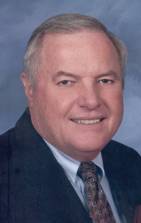Mechanical Engineer
Interests: Cold Fusion
A native of Kansas, Dr. Frank E. Gordon received his B.S. degree in Mechanical Engineering from the University of Kansas in 1967. He received a Doctor of Engineering degree from the University of Kansas in 1971 with the support of a fellowship from the National Aeronautics and Space Administration.
Dr. Gordon began his federal service in March 1971 as a Mechanical Engineer at the Naval Undersea Center (NUC), now the Space and Naval Warfare Systems Center San Diego (SSC San Diego). Eight months later, he was selected as the Head, Projects Branch, managing the design and fabrication of special test facilities.
In 1973 Dr. Gordon was selected to head the Test Division where test and evaluation operations were conducted on a number of Navy weapon systems, including the Encapsulated Harpoon, Trident D-5 missiles, and the MK 46 and MK 50 torpedoes. He was involved in the development of the initial Test and Evaluation Master Plan and served on the source-selection board for the TOMAHAWK missile development program. He participated in the development of the test procedures for the Surface Ship Radiated Noise Measurement Range and a project to provide underwater test ranges and facilities for the Republic of Korea.
In 1979 Dr. Gordon was appointed the Navy's strategist for Undersea Warfare Weaponry Technology Strategy. He assembled a team of Navy and university laboratory personnel to prepare a strategy covering torpedo guidance and control, torpedo propulsion, mines, warheads, fire control, countermeasures systems, and underwater explosive effects.
Dr. Gordon was selected to head the Central Staff Department in 1982 with responsibilities to provide centralized financial and administrative management for the Center. In 1986, he became Head of the Naval Ocean Systems Center's Antisubmarine Warfare (ASW) Department and was promoted to the Senior Executive Service. In this position he supervised scientists and engineers in the development and testing of major ASW weapon systems, including the MK 46 and MK 50 torpedoes, the Vertical Launch Antisubmarine Rocket (ASROC), and the MK 116 ASW Control Systems. He became a member of the Senior Executive Service in 1987.
In May 1992 Dr. Gordon became the Executive Director of the Naval Command, Control and Ocean Surveillance Center, ISE West Coast Division (NISE West), headquartered in San Diego with detachments and facilities throughout the Pacific. NISE West employed over 900 and was responsible for in-service engineering for command, control and communications systems. Leadership areas include communications systems, command and control systems, air traffic control and navigation, security systems, ocean surveillance, automated systems testing and information technology.
The 1995 Base Realignment and Closure decision consolidated and merged NISE West with the then Naval Command, Control and Ocean Surveillance Center, RDT&E Division, now the Space and Naval Warfare Systems Center San Diego. Dr. Gordon became Head, Navigation & Applied Sciences Department in March 1996. In this position he supervised over 430 civilian employees and managed an annual budget of over $270 million. Leadership areas include Global Positioning Systems, Marine Navigation, Airspace Systems, Mobile Tactical Systems, Biosciences (Marine Mammals), Environmental Sciences, and Advanced Technology Systems. In 2003, he was assigned a collateral duty to lead and coordinate all Anti Terrorism/Force Protection efforts of the SPAWAR Systems Command and their subordinate activities. In 2005, his collateral duty assignment was increased to include Customer Relations Management and Corporate Business Development for SPAWAR. He has also led an international agreement with Sweden in the development of nonlinear dynamics and nonacoustic ASW that started in 1997.
Dr. Gordon retired from federal service after more than 38 years in July, 2009 so that he could pursue the development of ?cold fusion? on a full-time basis. His retirement letter noted his many accomplishments with particular emphasis that his ? managing programs of significance to the Navy and the Nation, with substantial personal interest in seeking very bright young scientists and engineers and recruiting them into the ranks of Navy civilian technologists, has resulted in providing the U.S. Navy the international lead in emerging and potentially substantially important technologies such as nonlinear dynamics, stochastic resonance, cold fusion, and IMAT.?
Dr. Gordon has authored and co-authored a number of publications and holds four patents jointly with other co-inventors. Community activities include serving as a member of the Mechanical Engineering Advisory Board at the University of Kansas and the San Diego State University School of Engineering Advisory Board. He was honored with the University of Kansas Mechanical Engineering 2005 Distinguished Alumni Award. He and his wife, Lynda have two grown children.


